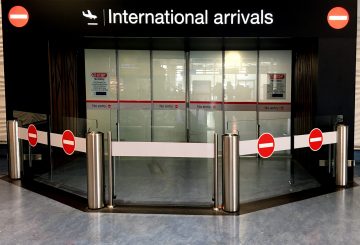Một thành viên hội đồng thành phố đã bày tỏ lo ngại rằng việc thu gom rác hàng tuần của Auckland có thể được giảm xuống một dịch vụ ít thuận tiện hơn hai tuần một lần. Một dự thảo Kế hoạch Quản lý và Giảm thiểu Chất thải của Hội đồng Auckland cho năm 2024 đề xuất chuyển sang thu gom rác hai tuần một lần, nhưng chỉ khi thùng phế liệu thực phẩm bên lề đường được thiết lập tốt.
Mục đích của Hội đồng là khuyến khích giảm chất thải. Tuy nhiên, Ủy viên Hội đồng Manurewa-Papakura Daniel Newman tin rằng việc thu gom phế liệu thực phẩm nên bổ sung chứ không thay thế cho việc thu gom rác hàng tuần. Ông mô tả sự thay đổi được đề xuất là một trong những đề xuất bất tiện và chưa được chứng minh nhất mà các nhân viên hội đồng từng đưa ra, và dự đoán nó sẽ rất không được nhiều cư dân Auckland ưa chuộng.
Newman lập luận rằng các hộ gia đình Auckland, chứ không phải các chính trị gia và nhân viên hội đồng, quyết định xem họ có cần thu gom rác hàng tuần hay không. Ông cáo buộc một số ủy viên hội đồng cố gắng buộc người dân Auckland thay đổi hành vi bằng cách từ chối họ lựa chọn. Ông cũng khuyến khích người dân bày tỏ ý kiến của họ về kế hoạch của hội đồng, cảnh báo rằng dịch vụ thu gom rác hàng tuần có thể gặp rủi ro trừ khi người dân Auckland thuyết phục hội đồng giữ nó.
Dự thảo của hội đồng cũng đề cập rằng nó nên hỗ trợ những cư dân lo lắng về việc chuyển sang các bộ sưu tập hai tuần một lần, đặc biệt là những người trong các hộ gia đình lớn. Tờ New Zealand Herald báo cáo rằng dịch vụ giảm có thể bắt đầu từ năm 2026. Mục đích là giảm rác bên lề đường từ mức cơ bản năm 2022 là 141kg xuống 120kg/người vào năm 2028 và xuống còn 100kg vào năm 2030. Việc triển khai chung các thùng phế liệu thực phẩm gần đây dự kiến sẽ giúp đạt được điều này bằng cách giảm tới 41% lượng thùng chứa theo trọng lượng. Hiện tại, hội đồng thu thập các thùng có thể tái chế mỗi hai tuần một lần.
Hội đồng đã thừa nhận thâm hụt ngân sách, với việc bán tài sản tiềm năng và tăng lãi suất đáng kể đang được xem xét. Một số cổ phần của hội đồng tại Sân bay Auckland đã được bán, và Thị trưởng Wayne Brown đã đề nghị bán hợp đồng thuê dài hạn cho Cảng Auckland và đầu tư số tiền thu được vào một quỹ đầu tư mới từ 3 tỷ đến 4 tỷ đô la. Tuy nhiên, các Ủy viên Hội đồng Mike Lee và John Watson đã chỉ trích đề xuất này, với Lee gọi nó là “một dải tài sản” và Watson cảnh báo rằng thành phố sẽ mất quyền kiểm soát một tài sản lớn trong thời gian hợp đồng thuê.





























































